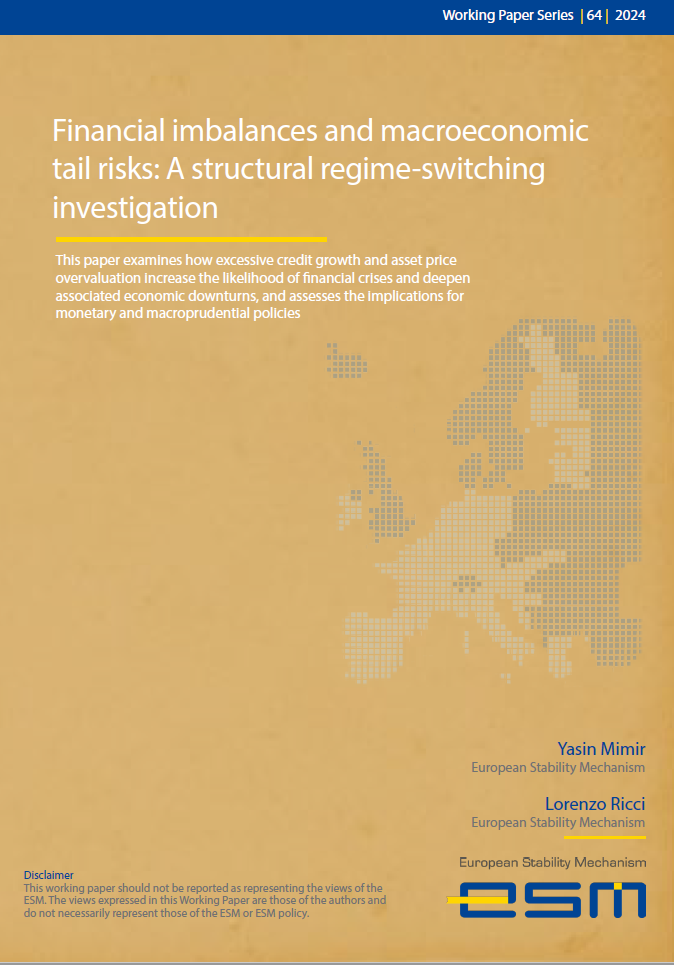Title: Financial imbalances and macroeconomic tail risks: A structural regime-switching investigation
Summary: This paper examines how excessive credit growth and asset price overvaluation increase the likelihood of financial crises and deepen associated economic downturns, and assesses the implications for monetary and macroprudential policies.
Authors: Yasin Mimir (ESM), Lorenzo Ricci (ESM)
Abstract: We first empirically document that excessive credit growth and asset price overvaluations raise the likelihood of financial crises and deepen the severity of associated economic downturns in advanced economies using linear probability models and local projections. We then rationalise these empirical findings in a Markov regime-switching version of a canonical New Keynesian DSGE model with the banking and housing sectors estimated for the euro area, which explicitly accounts for prolonged financial cycles based on hybrid house-price expectations and the nonlinearities arising from financial imbalances. The model offers a framework in which low-probability financial crashes are nested within typical business cycles. We then present several policy applications to show how this framework can be used to conduct structural macro-financial risk analysis depending on the evolution of financial conditions and to assess monetary and macroprudential policies, uncovering key policy trade-offs.
Disclaimer: This Working Paper should not be reported as representing the views of the ESM. The views expressed in this Working Paper are those of the author(s) and do not necessarily represent those of the ESM or ESM policy. No responsibility or liability is accepted by the ESM in relation to the accuracy or completeness of the information, including any data sets, presented in this Working Paper.
Keywords: Regime-switching models, financial imbalances, macroprudential policy, financial stability
JEL codes: C53, E12, E50, E30, G01
